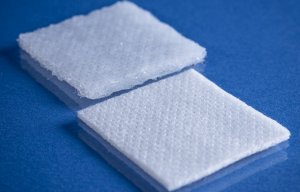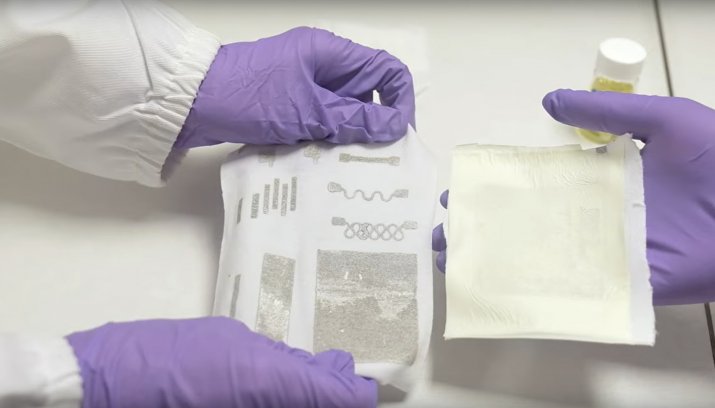
Oeko-Tex 100 for Technical Absorbents
Prototype has both piezoelectric and triboelectric functions.

7th June 2022
Innovation in Textiles
|
Singapore
Scientists at Nanyang Technological University in Singapore have developed a stretchable and waterproof fabric that turns energy generated from body movements into electrical energy.
A crucial component in the fabric is a polymer that when pressed or squeezed converts mechanical stress into electrical energy. It is made with stretchable spandex as a base layer and integrated with a rubber-like material to keep it strong, flexible, and waterproof.
In a proof-of-concept experiment reported in the scientific journal Advanced Materials, the NTU Singapore team showed that tapping on a 3cm by 4cm piece of the new fabric generated enough electrical energy to light up 100 LEDs.
Washing, folding, and crumpling the fabric did not cause any performance degradation, and it could maintain stable electrical output for up to five months, demonstrating its potential for use as a smart textile and wearable power source.
“There have been many attempts to develop fabrics or garments that can harvest energy from movement, but a big challenge has been to develop something that does not degrade in function after being washed, and at the same time retains excellent electrical output,” said materials scientist and NTU associate provost Professor Lee Pooi See, who led the study. “We have demonstrated that our prototype continues to function well after washing and crumpling. We think it could be woven into t-shirts or integrated into soles of shoes to collect energy from the body’s smallest movements, piping electricity to mobile devices.”
The prototype fabric produces electricity in two ways – when it is pressed or squashed (piezoelectricity), and when it comes into contact or is in friction with other materials, such as skin or rubber gloves (triboelectric effect).
To fabricate the prototype, the scientists first made a stretchable electrode by screen-printing an ink comprising silver and styrene-ethylene-butylene-styrene (SEBS), a rubber-like material found in teethers and handlebar grips, to make it more stretchable and waterproof.
This stretchable electrode is then attached to a piece of nanofibre fabric that is made up of two main components – poly(vinylidene fluoride)-co-hexafluoropropylene (PVDF-HPF), a polymer that produces an electrical charge when compressed, bent, or stretched and lead-free perovskites, a promising material in the field of solar cells and LEDs.
“Embedding perovskites in PVDF-HPF increases the prototype’s electrical output,” explained NTU PhD student Jiang Feng. “We opted for lead-free perovskites as a more environmentally friendly option. While perovskites are brittle by nature, integrating them into PVDF-HPF gives the perovskites exceptional mechanical durability and flexibility. The PVDF-HPF also acts an extra layer of protection to the perovskites, adding to its mechanical property and stability.”
The result is a prototype fabric that generates 2.34 watts per square metre of electricity – enough to power small electronic devices, such as LEDs and commercial capacitors.
“Despite improved battery capacity and reduced power demand, power sources for wearable devices still require frequent battery replacements,” said Professor Lee. “Our results show that our energy harvesting prototype fabric can harness vibration energy from a human to potentially extend the lifetime of a battery or even to build self-powered systems. To our knowledge, this is the first hybrid perovskite-based energy device that is stable, stretchable, breathable, waterproof, and at the same time capable of delivering outstanding electrical output performance.”

Business intelligence for the fibre, textiles and apparel industries: technologies, innovations, markets, investments, trade policy, sourcing, strategy...
Find out more